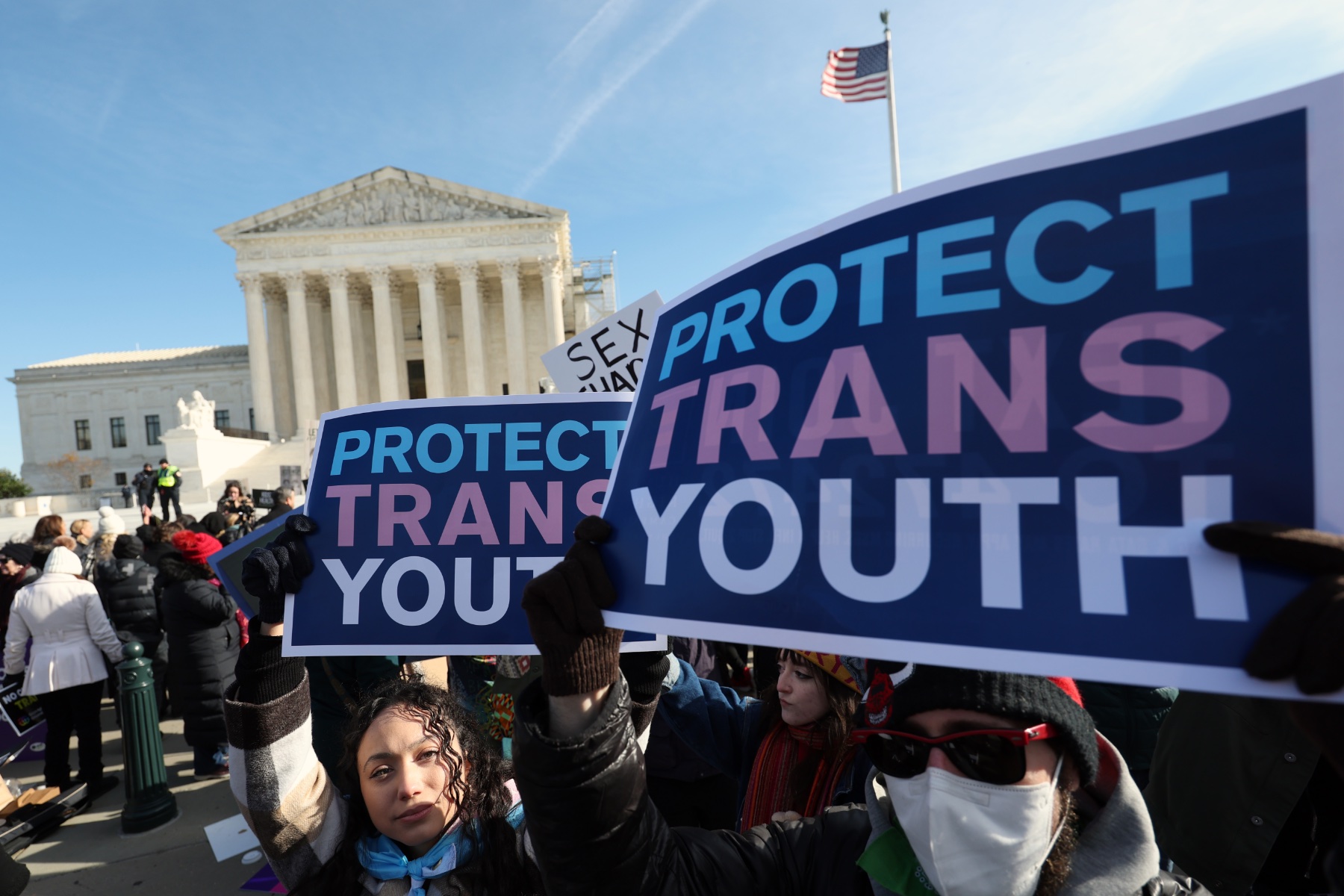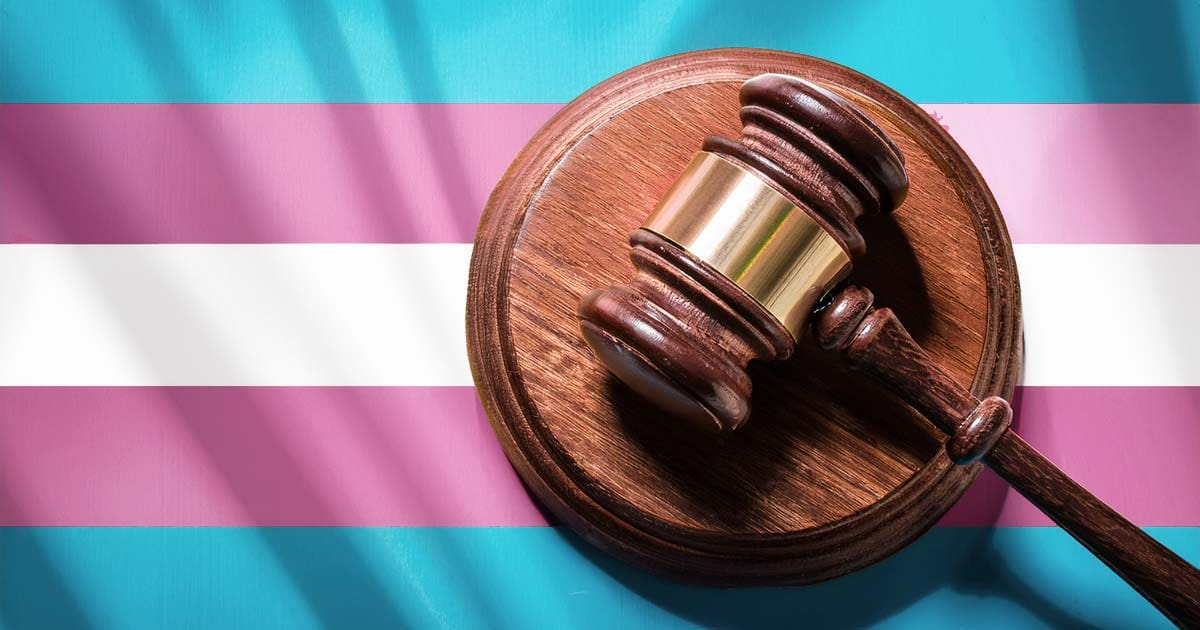Open letter and sign-on statement: The U.S. must preserve integrity of law against female genital mutilation/cutting and condemn its harmful conflation with gender-affirming care – Equality Now

Report on Civil Society Opposition to U.S. House Bill H.R. 3492
Executive Summary
A coalition of 95 international and U.S.-based civil society organizations (CSOs) has issued a formal appeal to the U.S. Government, urging the rejection of House Bill H.R. 3492. The bill seeks to amend federal law by conflating Female Genital Mutilation/Cutting (FGM/C) with gender-affirming medical care for minors. The coalition argues this legislation fundamentally misrepresents both issues, thereby undermining critical progress on several Sustainable Development Goals (SDGs), particularly SDG 5 (Gender Equality), SDG 3 (Good Health and Well-being), and SDG 16 (Peace, Justice and Strong Institutions). The proposed amendment is reported to dilute existing legal protections against FGM/C and promote discriminatory policies, setting a dangerous precedent both domestically and globally.
Legislative Context and Civil Society Mobilization
H.R. 3492: A Challenge to Established Legal Frameworks
On May 19, 2025, Representative Marjorie Taylor Greene introduced H.R. 3492. The bill proposes to expand the legal definition within 18 U.S. Code § 116, the federal law prohibiting FGM/C. The amendment aims to criminalize the provision of gender-affirming care for individuals under 18 by defining it as “genital mutilation.” This redefinition directly challenges the internationally recognized definition of FGM/C, a practice affecting over 230 million individuals globally. The House Judiciary Committee’s approval of the bill on June 10, 2025, has escalated concerns among human rights advocates.
Coalition Response
Led by the U.S. End FGM/C Network, the Global Platform for Action to End FGM/C, and the Americas Alliance to End FGM/C, a consortium of 95 CSOs, survivors, and activists has co-signed an open letter of opposition. The signatories express profound concern that the bill’s conflation of distinct issues will impede efforts to achieve key SDG targets and reverse decades of progress in human rights.
Impact Analysis on Sustainable Development Goals (SDGs)
Undermining SDG 5: Gender Equality
The proposed legislation poses a significant threat to the achievement of SDG 5, which aims to achieve gender equality and empower all women and girls.
- Threat to Target 5.3 (Eliminate Harmful Practices): The core mission to eradicate FGM/C is aligned with Target 5.3. By expanding the scope of the anti-FGM/C law to include unrelated medical procedures, H.R. 3492 dilutes its focus and effectiveness. This could weaken legal and community-based efforts to protect the over 500,000 women and girls in the U.S. at risk of or affected by FGM/C.
- Contradiction of Target 5.1 (End Discrimination): The bill introduces a discriminatory framework that targets transgender and gender non-conforming youth, directly opposing the goal of ending all forms of discrimination against women and girls. It weaponizes a law designed to protect girls from violence to marginalize another vulnerable group.
Jeopardizing SDG 3: Good Health and Well-being
The bill’s false equivalency between a harmful practice and essential healthcare directly conflicts with the principles of SDG 3.
- FGM/C: A non-consensual procedure performed on children for non-medical reasons, FGM/C is recognized as a human rights violation with severe, lifelong negative impacts on physical, sexual, and psychological health.
- Gender-Affirming Care: An evidence-based, medically necessary, and consensual form of healthcare. Research indicates it improves psychosocial functioning and significantly decreases rates of depression among recipients. Denying this care is detrimental to the well-being of transgender youth.
Eroding SDG 10 (Reduced Inequalities) and SDG 16 (Peace, Justice and Strong Institutions)
The legislation undermines the foundations of justice, equality, and institutional integrity.
- Violation of Target 16.2 (End Violence Against Children): FGM/C is a form of child abuse and violence. The report argues that H.R. 3492 distracts from and obstructs the primary goal of protecting children from this specific harm.
- Violation of Target 10.3 and 16.b (Promote Non-Discriminatory Laws): The bill represents a discriminatory policy that increases inequality by targeting a specific community. This contravenes the global commitment to ensure equal opportunity and enforce non-discriminatory laws for sustainable development.
- Weakening the Rule of Law: By distorting an established legal definition agreed upon by international bodies like the World Health Organization, the bill risks undermining the integrity of the U.S. legal system and its ability to prosecute the actual crime of FGM/C effectively.
Recommendations for Upholding SDG Commitments
To preserve the integrity of human rights law and maintain progress toward the SDGs, the coalition presents the following urgent recommendations:
- The U.S. Congress must unequivocally reject H.R. 3492 to prevent the dilution of anti-FGM/C legislation and protect vulnerable communities.
- All federal and state government bodies must refrain from falsely equating FGM/C with gender-affirming care and instead focus resources on preventing FGM/C, thereby promoting human rights for all.
- All stakeholders are invited to stand in solidarity to foster an environment where the dignity and rights of every individual are defended, particularly those from marginalized groups.
- Global decision-makers and civil society actors must reject any attempt to instrumentalize the campaign against FGM/C to advance discriminatory political agendas that harm the broader human rights movement.
List of Signatories
- #StandWithHer
- ACCM (UK)
- African Women Rights Organisation (AWRA)
- Asian Pacific Resource & Research Center for Women
- Association CO-GNA Mère de l’enfant
- Association des Enfants et Jeunes Travailleurs (AEJT)
- Aura Freedom International
- Ayuda
- Birth Nutrition
- British Black Anti Poverty Network
- Center for Gender and Refugee Studies
- Centre de Formation en Mécanismes de Protection des Droits Humains (CFMPDH), Benin
- Centre for Human Rights, University of Pretoria
- Centre for Youth Empowerment and Civic Education (CYECE)
- CHOICE for Youth and Sexuality
- Circuit Pointe Charity Foundation
- Coalition des femmes-filles handicapées féministes de l’Afrique de l’Ouest
- Community Care Collective
- Covenant Foundation for Girls (COFGIRLS)
- Doctors on Ground (DnG)
- Ekiti State
- End FGM Africa Network
- End FGM Canada Network
- END FGM EU Network
- END FGM/C Network Africa
- Equality Now
- ERA Coalition
- ESWA
- Farah Fundaition Development
- Federatie COC Nederland
- FGM/C Advisory Committee
- Fondation Zenab Sangare
- Fòs Feminista
- Fundacion Derechos Humanos Equidad y Genero (FunDheg)
- Grow Well
- Highlands Women Human Rights Defenders Movement
- Humanity For The World (HFTW)
- Humanity for Women and Children
- ILGA-North American and the Caribbean
- Illinois Accountability Initiative
- Immigration Center for Women and Children
- International Action Network for Gender Equity & Law (IANGEL)
- International Federation of Business and Professional Women
- International Survivors of Family Empowered-iSAFE
- Iowa Coalition Against Domestic Violence
- Kalkal Human Rights Development Organization (KAHRDO)
- KAN-WIN
- Kenya Council of Imams and Ulamaa
- Laal NYC
- LastMile4D
- Magnuson Trust
- Malaysian Doctors for Women and Children
- Mother Africa
- Muslims for Progressive Values
- NAFGEM Tanzania
- National Coalition Against Harmful Practices (NACAHP) Liberia
- Network Against FGM in Somaliland- NAFIS NETWORK
- ONG éducation Universelle
- Orchid Project
- Outright International
- PAI
- Qalbumaryam
- Raksha Inc
- Restorative Justice Coalition
- Rural Development Foundation (RDF)
- Sahiyo U.S. Inc.
- Sakhi for South Asia Survivors
- Salamander Trust
- Same Boat Consulting
- Settlement Services International
- Society of Gender Professionals
- Solidarity Yaad International
- Solutions for Igniting Social Transformation
- South Asia Network
- South Asian SOAR
- Spread Truth
- Spread Truth Africa
- STEWARDWOMEN
- Tahirih Justice Center
- Taves Generation
- The Advocates for Human Rights
- The Girls’ Agenda
- The Global Platform for Action to End FGM/C
- The U.S. End FGM/C Network
- Together for Girls
- Umoja Development Organization
- Université de Montréal
- Voix de Femmes
- Washington Coalition to End FGM/C
- WeSpeakOut
- White Ribbon Alliance UK
- Without Exception Films
- Women Deliver
- Youth Association for Development (YAD)
Analysis of Sustainable Development Goals in the Article
1. Which SDGs are addressed or connected to the issues highlighted in the article?
The article on the opposition to H.R. 3492 and the protection of anti-FGM/C laws addresses several Sustainable Development Goals (SDGs). The primary connections are to goals concerning gender equality, health, justice, and partnerships.
-
SDG 5: Gender Equality
This is the most prominent SDG in the article. The entire discussion revolves around Female Genital Mutilation/Cutting (FGM/C), which is explicitly defined as “a form of child abuse, gender discrimination, and violence against women and girls.” The article also addresses the backlash against “gender equality and LGBTIQ+ rights,” further cementing its connection to SDG 5.
-
SDG 3: Good Health and Well-being
The article directly connects FGM/C to health outcomes, stating it “causes short and long-term physical, sexual, and psychological harm.” It also discusses the health aspects of gender-affirming care, noting that it is “medically necessary” and “leads to decreased rates of depression, improvement in psychosocial functioning.”
-
SDG 16: Peace, Justice and Strong Institutions
The article is centered on a legal issue—the proposed amendment (H.R. 3492) to an existing federal law (18 U.S. Code § 116). It discusses the importance of preserving the integrity of the law, promoting human rights, and ensuring legal frameworks protect vulnerable populations. FGM/C is described as a “human rights violation” and a form of “torture under international human rights law,” linking the issue directly to justice and strong institutions.
-
SDG 17: Partnerships for the Goals
The article itself is an example of this goal in action. It is an open letter co-signed by “92 civil society organizations from across the United States and around the world,” including networks like the U.S. End FGM/C Network and the Global Platform for Action to End FGM/C. This demonstrates a multi-stakeholder partnership working to influence policy and protect human rights.
2. What specific targets under those SDGs can be identified based on the article’s content?
Several specific targets can be identified within the relevant SDGs based on the article’s text.
-
SDG 5: Gender Equality
- Target 5.3: “Eliminate all harmful practices, such as child, early and forced marriage and female genital mutilation.” The article’s primary focus is the fight to end FGM/C and to prevent the dilution of laws designed for its eradication.
- Target 5.1: “End all forms of discrimination against all women and girls everywhere.” The article identifies FGM/C as “gender discrimination” and also opposes the proposed bill for its potential to “stigmatize, marginalize, or scapegoat” transgender individuals, which is another form of discrimination.
-
SDG 3: Good Health and Well-being
- Target 3.7: “By 2030, ensure universal access to sexual and reproductive health-care services…” The article discusses FGM/C as a practice to “control their sexuality” and highlights its negative “sexual” health effects. It also advocates for access to “medically necessary” gender-affirming care.
- Target 3.4: “…promote mental health and well-being.” The text explicitly mentions the “psychological harm” caused by FGM/C and the positive mental health outcomes of gender-affirming care, such as “decreased rates of depression.”
-
SDG 16: Peace, Justice and Strong Institutions
- Target 16.2: “End abuse, exploitation, trafficking and all forms of violence against and torture of children.” The article repeatedly defines FGM/C as a “human rights violation,” a “form of child abuse,” and a practice considered “a form of torture under international human rights law.”
- Target 16.B: “Promote and enforce non-discriminatory laws and policies for sustainable development.” The central conflict in the article is the call to reject H.R. 3492, which is presented as a discriminatory policy, and to uphold the existing “STOP FGM Act,” which is framed as a protective, non-discriminatory law.
-
SDG 17: Partnerships for the Goals
- Target 17.17: “Encourage and promote effective public, public-private and civil society partnerships…” The open letter, co-signed by a large and diverse coalition of 92 CSOs, is a direct manifestation of this target, showcasing a civil society partnership aimed at achieving a shared policy goal.
3. Are there any indicators mentioned or implied in the article that can be used to measure progress towards the identified targets?
The article provides both quantitative and qualitative indicators that can be used to measure progress.
-
For Target 5.3 (Eliminate FGM/C):
The article provides prevalence data that serves as a baseline for Indicator 5.3.2 (Proportion of girls and women aged 15-49 years who have undergone female genital mutilation/cutting). Specific data points mentioned are:
- “over 230 million women and girls worldwide” affected by FGM/C.
- “over half a million women and girls in the United States alone” affected by FGM/C.
- FGM/C takes place in “over 94 countries.”
-
For Target 16.2 (End violence against children):
The existence of a legal framework is a key indicator. The article’s discussion of “U.S. Federal law 18 U.S. Code § 116 ‘Female Genital Mutilation,’ as amended by the STOP FGM Act” serves as a qualitative indicator for Indicator 16.2.2 (Number of countries with national legislation to address violence against children).
-
For Target 3.4 (Promote mental health):
The article implies an indicator for mental health outcomes by citing research that shows “gender-affirming care leads to decreased rates of depression.” This suggests that tracking rates of depression among relevant populations can be a measure of progress.
-
For Target 17.17 (Promote partnerships):
A direct, quantifiable indicator is provided in the text: the partnership consists of “92 civil society organizations from across the United States and around the world,” demonstrating the scale and scope of the collaboration.
4. Table of SDGs, Targets, and Indicators
| SDGs | Targets | Indicators Identified in the Article |
|---|---|---|
| SDG 5: Gender Equality | Target 5.3: Eliminate all harmful practices, such as… female genital mutilation. | Indicator 5.3.2 (Prevalence of FGM/C): The article cites that FGM/C affects “over 230 million women and girls worldwide” and “over half a million… in the United States.” |
| SDG 16: Peace, Justice and Strong Institutions | Target 16.2: End abuse… and all forms of violence against and torture of children. | Indicator (Legal Frameworks): The existence and defense of the “U.S. Federal law 18 U.S. Code § 116” and the “STOP FGM Act” as legal instruments to protect children from FGM/C. |
| SDG 16: Peace, Justice and Strong Institutions | Target 16.B: Promote and enforce non-discriminatory laws and policies. | Indicator (Policy Action): The call to “unequivocally reject H.R. 3492” is an action to prevent a discriminatory law, while upholding the existing anti-FGM/C law serves as enforcement of a non-discriminatory one. |
| SDG 3: Good Health and Well-being | Target 3.4: …promote mental health and well-being. | Indicator (Mental Health Outcomes): The article cites research showing that gender-affirming care leads to “decreased rates of depression.” |
| SDG 17: Partnerships for the Goals | Target 17.17: Encourage and promote effective… civil society partnerships. | Indicator (Number of Partners): The open letter is co-signed by “92 civil society organizations from across the United States and around the world.” |
Source: equalitynow.org

What is Your Reaction?
 Like
0
Like
0
 Dislike
0
Dislike
0
 Love
0
Love
0
 Funny
0
Funny
0
 Angry
0
Angry
0
 Sad
0
Sad
0
 Wow
0
Wow
0













































































